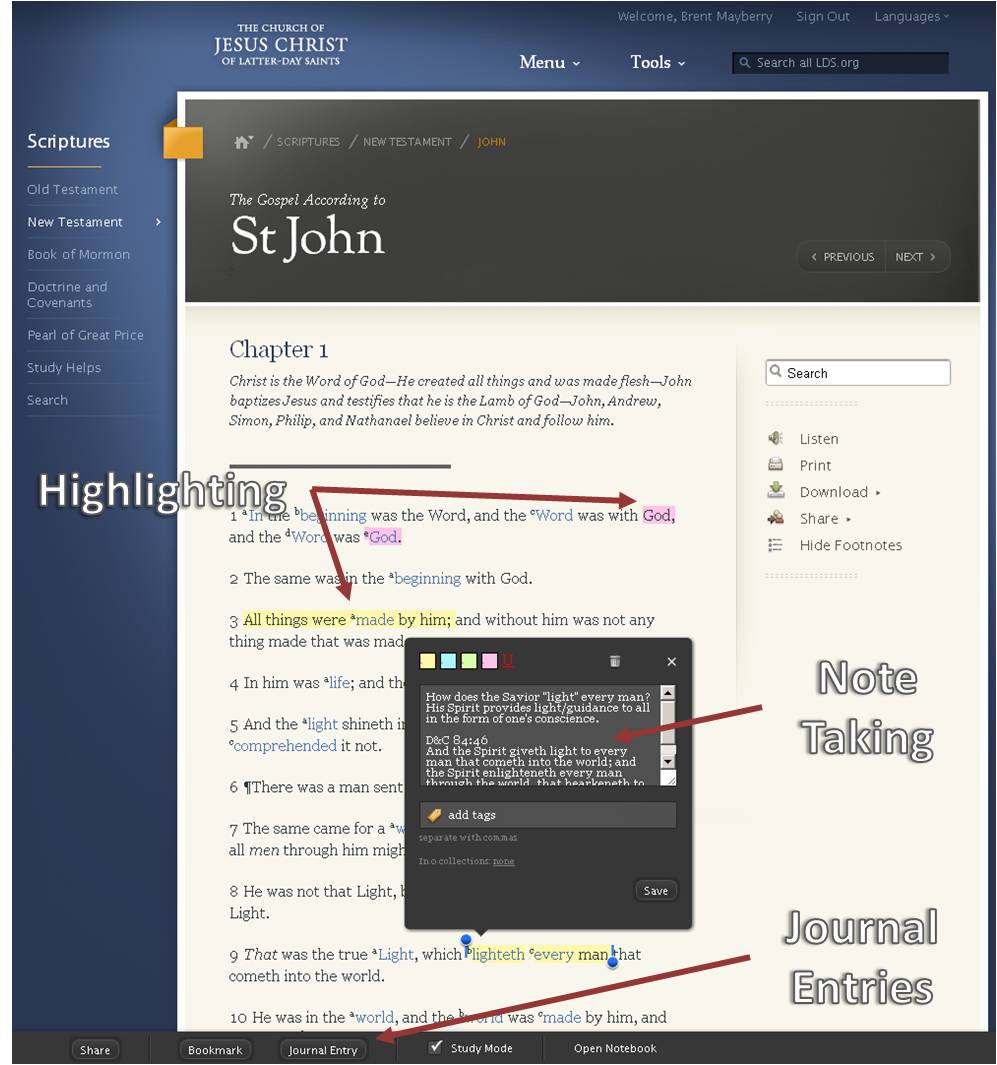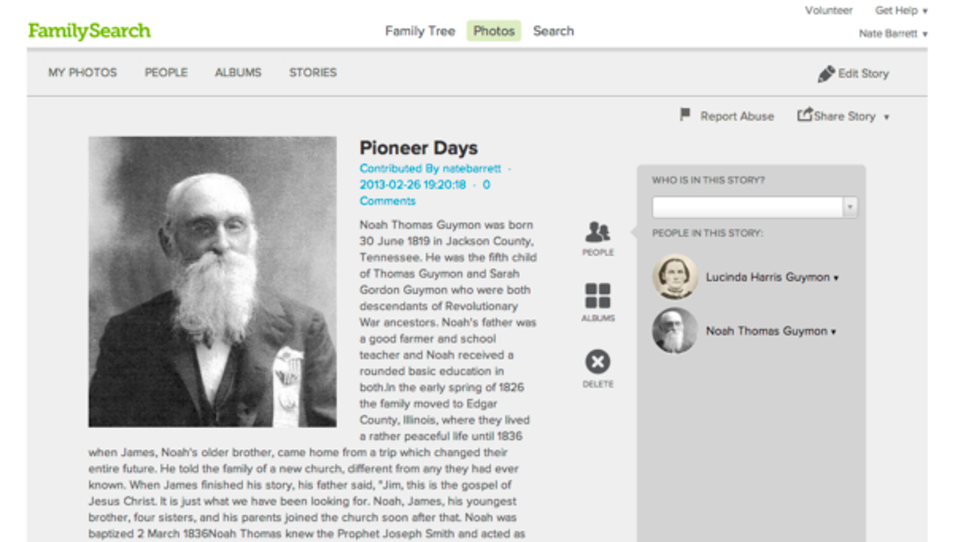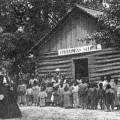Some friends recently had dinner with a sister missionary serving in Salt Lake City on temple square. She contacted an investigator in another country, commenced teaching the discussions, coordinated the hand-off to local members, and followed up after baptism all from the Internet. This man lived in a country not currently open to proselyting missionaries. With technology and the advancements on the Internet, missionaries are now teaching the gospel in literally every country on earth. As a result, more people are hearing the message and joining the Church.
Technology is a wonderful instrument, but not something everyone understands extremely well. But incredibly, computer software and the Internet are solving that problem, too.
Distributed software today is everywhere. It’s user friendly, powerful, efficient, and empowering. We take advantage of it without even realizing it. Ask a class room of children how many of them could program a website and expect a few youngsters to raise their hands. Likely most of them have a Facebook page, however, which means they’ve already done what was asked without evening realizing it. We take advantage of the new technology because it’s easier and more ubiquitous than ever before.
The Church of Jesus Christ and the Use of Technology
Such is the case for The Church of Jesus Christ of Latter-day Saints, as well. Technology has considerably changed the way we preach the gospel. That which was difficult and localized is easy and worldwide. Thousands of digital reproductions are completed and posted only moments after live delivery, including video, audio, and text versions, amassing the single largest database of religious information from living oracles on the planet. All these media are made available to the entire world in many different languages free of charge.
1. SCRIPTURES
 A colossal endeavor to link all four standard works together with a topical guide was completed in 1981. With the explosion of the Internet, now the work has moved off the printed page to digital formats on the web with a totally integrated version of the scriptures and study guide online, available in audio, video, and text media formats. Logins for all 15+ million members of the Church are already in place. The scriptures can be marked, labeled, and indexed online. Any verse of scripture can be referenced, highlighted, and navigated with a single link.
A colossal endeavor to link all four standard works together with a topical guide was completed in 1981. With the explosion of the Internet, now the work has moved off the printed page to digital formats on the web with a totally integrated version of the scriptures and study guide online, available in audio, video, and text media formats. Logins for all 15+ million members of the Church are already in place. The scriptures can be marked, labeled, and indexed online. Any verse of scripture can be referenced, highlighted, and navigated with a single link.
2. GENEALOGY
 Another popular website, FamilySearch.org, provides access to the largest collection of genealogical and historical records in the world. Millions of people use FamilySearch records, resources, and services each year to learn more about their family history. Digital records from over 100 countries spanning hundreds of years are safely stored. Experts claim access to an estimated 3 Billion names from all over the world. Additionally, there are 4,745 family history centers worldwide, where personal help can be had and resources are again available to all without charge, including 24/7 telephone support, live chat, email support, and a massive database of training resources and online troubleshooting database. Recently, FamilySearch participants have been granted personal access to Ancestry.com, FindMyPast, and MyHeritage. All this is provided to participants at no cost.
Another popular website, FamilySearch.org, provides access to the largest collection of genealogical and historical records in the world. Millions of people use FamilySearch records, resources, and services each year to learn more about their family history. Digital records from over 100 countries spanning hundreds of years are safely stored. Experts claim access to an estimated 3 Billion names from all over the world. Additionally, there are 4,745 family history centers worldwide, where personal help can be had and resources are again available to all without charge, including 24/7 telephone support, live chat, email support, and a massive database of training resources and online troubleshooting database. Recently, FamilySearch participants have been granted personal access to Ancestry.com, FindMyPast, and MyHeritage. All this is provided to participants at no cost.
FamilySearch International is the largest genealogy organization in the world. Millions of people use FamilySearch records, resources, and services to learn more about their family history. To help in this great pursuit, FamilySearch has been actively gathering, preserving, and sharing genealogical records worldwide for over 100 years. Patrons may access FamilySearch services and resources free online at FamilySearch.org or through over 4,600 family history centers in 132 countries, including the main Family History Library in Salt Lake City, Utah.
According to FamilySearch, the site was launched 24 May 1999, and more than 3.5 billion names reside in searchable databases. Over 35 million historic records are published online each month. The resource boasts of 1,363 searchable historic record collections online and over 10 million visits per day by more than 85,000 visitors.
FamilySearch.org—Facts and Statistics
| Launch Date | 24 May 1999 |
| Number of names in searchable databases | Over 3.5 billion |
| Number of historic records published online each month | Over 35 million |
| Number of digital images published online each month from original source documents | Over 33 million |
| Number of searchable historic record collections online | 1,363 |
| Number of indexed names published per year | Over 200 million |
| Number of visits per day | Over 10 million |
| Number of visitors per day | Over 85,000 |
| Number of pages viewed per day | Over 5 million |
| Page views since launch | Over 16.6 billion |
| Visits since launch | 712 million |
| Visitors since launch | 308 million |
| Number of online indexing volunteers | Over 200,000 |
| Number of registered users | Over 1 million |
| Number of family history centers | 4,600 in 126 countries |
| Number of digital books | Over 60,000 |
FamilySearch has 6.875 billion historic records on microfilm that are being digitized and eventually indexed. These records contain an estimated 20.6 billion names.
FamilySearch has over 200 digital record preservation camera teams in 45 countries who produce more than 100 million new digital images for free online publication each year.
The FamilySearch Indexing program is available in English, Dutch, French, German, Italian, Japanese, Polish, Portuguese, Russian, Spanish, and Swedish with more language interfaces and international projects coming.
3. SOCIAL MEDIA
 An estimated 80,000+ missionaries also use social media to preach the gospel all around the world. Facebook and Twitter are frequent sources of their message, but these sites are not the only social media regularly updated with Church content. Instagram was recently added to the list of social media used by the Church, which now includes at least the following media channels:
An estimated 80,000+ missionaries also use social media to preach the gospel all around the world. Facebook and Twitter are frequent sources of their message, but these sites are not the only social media regularly updated with Church content. Instagram was recently added to the list of social media used by the Church, which now includes at least the following media channels:
• Google+
• YouTube
• iTunes
• Roku
• BYUtv
• Much, much more…
4. CINEMATOGRAPHY
The enormous video project taken on by the Church depicting the life and ministry of the Savior, called The Life of Jesus Christ Bible Videos, combines technology, cinematic arts, and high-quality film making. Dozens of videos online portray significant events in the life of Jesus Christ. Users can sign-up to be notified as new videos become available. Internet technology was first offered to the general public in the last quarter century during the 1900s. The Church was right there using the Internet then and has improved right along with other advancements in this industry. The number of sites and Internet footprint was small then. But today, multiple sites, blogging, video, streaming and HD quality is common and abundant on all of its sites.
Hundreds more online videos, web links, and millions of impressions are made available through these media as they change the world as we know it, making wholesome and uplifting content available to users. Often embedded in the midst of the article or web page where the reference is used, video and audio are becoming prolific and common. This technology has made content more accessible and easier to use than ever before. But you don’t have to take my word for it. You can see, hear, and feel it for yourself.
5. WEBSITES
The Church maintains dozens of websites in many different languages, and new sites are added and updated regularly. A consistent login is made available between multiple websites with some of the most popular receiving millions of daily visitors.
A partial list of the Church-sponsored websites follows:
• lds.org (informational) available in 100 different languages (unofficial count)
• familysearch.org (genealogy)
• ldsjobs.org (employment)
• mormon.org (missionary)
• tech.lds.org (technology)
And these items mentioned are only the beginning. To these media there are many more technologies to add, including at least the following: temples, schools, universities, missionary work, broadcasts, training, curriculum, genealogy updates, and much, much more.
6. LDSTOOLS
Provides church organization and membership contacts for local congregations from either a computer or the palm of your hand on a mobile device. In some cases it provides photographs and contact information. That content is left up to the local leaders and individual participants. Additional content is being added every day at a breakneck speed with no evidence of slowing in sight.
The Internet stretches beyond space and time to allow us to visit places and be involved in spreading the gospel message far-and-wide in a way we only dreamed about previously. Proximity is no longer a requirement to see and experience many locations all around the earth and enjoy the beauty this world and life have to offer.
Together these technologies allow the Church to share the gospel message to every corner of the earth, and people from all walks of life benefit.
The Use of Digital Devices in Missionary Work
The Church of Jesus Christ of Latter-day Saints has released updated information about the growing number of missionaries and the expanded use of digital devices and online missionary work. According to the latest reports, nearly 86,000 missionaries are now serving in 406 missions around the world. With the change in age requirements for both young men and young women who wish to serve full-time missions, the number of missionaries will continue to increase, but is expected to peak at about 88,000 after this year. It is also anticipated that in the late fall, the number will begin to plateau and then decrease and stabilize around 77,000. All the while, Sister missionaries have become a vital part of the discussion in mission leadership councils.
Additionally, 6,500 missionaries in 30 missions in the United States and Japan have been pilot testing the use of digital tablets. This technology is now being extended to all missions in North America, Japan, and western Europe which will enable more than 32,000 missionaries in more than 162 missions to have mini iPads for their immediate use for studying and teaching the gospel. Missionaries will be asked to purchase these $400 devices which they can keep after their mission. Assistance will be provided to those who cannot otherwise afford to purchase the device. Approximately the same number of missionaries will become anxiously engaged in missionary work online through such social media venues as Facebook several hours a day.
You can learn more by reading the article “Church Expands Use of Digital Devices for Missionary Work” and watching a video where Elder David F. Evans discusses the expanded missionary efforts in the Church.
What technologies in the Church help you? How are you using them?
About Walter Penning
In 1989, Walter Penning formed a consultancy based in Salt Lake City and empowered his clients by streamlining processes and building a loyal, lifetime customer base with great customer service. His true passion is found in his family. He says the best decision he ever made was to marry his sweetheart and have children. The wonderful family she has given him and her constant love, support, and patience amid life's challenges is his panacea.
Twitter •



